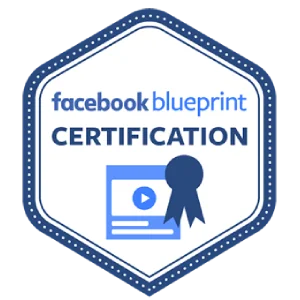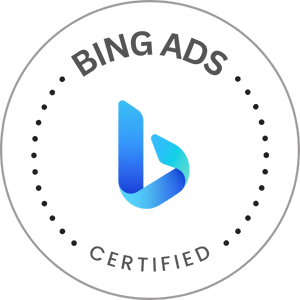B2B Marketing & E-commerce Expert
Drive revenue growth through data-driven SEO, Google Ads, and digital marketing strategies.
Delivers measurable results backed by GA4 real-time analytics and reporting.
20+ Years of
Excellence
500+
Brands
3,000+
Projects
90% Repeat
Business
Certified Professionals. Proven Results.





B2B Companies and eCommerce Brands Choose Us
















We Solve Complex Marketing Challenges
Technical
SEO Audit
High Cost per
Conversions
Merchant Account
Error Fixes
GA4 Tracking
Issues
User
Experience
Ad Account
Suspensions
Real-time
GA4 Reports
- Identify sudden traffic losses from Google algorithm updates
- Fix technical issues causing ranking drops within a week
- Analyze historical data to spot warning signs and prevent future drops
- Create recovery plans with measurable weekly targets
- Audit campaign structures to eliminate wasted ad spend
- Optimize bidding strategies based on conversion data
- Fix poor quality score issues affecting CPC
- Restructure ad groups for better targeting
- Set up proper conversion tracking for accurate ROI measurement
- Fix product feed quality and structure
- Match website data with merchant listings
- Clear account suspension and policy blocks
- Update missing product specifications
- Set up shipping and tax configurations
- Fix website and landing page errors
- Debug Google Analytics and Tag Manager setup
- Fix cross-domain tracking problems
- Setup accurate conversions and revenue tracking
- Setup phone calls and leads forms tracking
- Resolve missing or duplicate conversion data
- Implement proper UTM parameter tracking
- Optimize navigation for seamless user flow
- Simplify checkout for faster transaction completion
- Improve CTA placement to boost engagement
- Enhance visual hierarchy for better readability
- Address page load speed for reduced bounce rates
- Quick resolution of Google Ads policy violations
- Help with Google Business Profile suspensions
- Fix merchant center feed issues
- Resolve ad disapprovals
- Provide compliance documentation
- Live dashboards show real-time performance metrics
- Clear visuals display sales and ROI data
- Custom reports reveal marketing campaign results
- Quick alerts highlight key business metrics
- Track customer actions across all channels
- Monthly meetings review and adjust campaign strategies
Our Digital Marketing Expertise
Traffic Drops and Recovery
Through advanced diagnostic analytics, we identify and resolve traffic deterioration patterns resulting from algorithm shifts, technical impediments, or content strategy misalignment. Our strategic recovery framework typically delivers measurable improvements within 30-60 days.
- Identify sudden traffic losses from Google algorithm updates
- Fix technical issues causing ranking drops within a week
- Analyze historical data to spot warning signs and prevent future drops
- Create recovery plans with measurable weekly targets
Low ROI from Google Ads
- Audit campaign structures to eliminate wasted ad spend
- Optimize bidding strategies based on conversion data
- Fix poor quality score issues affecting CPC
- Restructure ad groups for better targeting
- Set up proper conversion tracking for accurate ROI measurement
Merchant Account Error Fixes
- Fix product feed quality and structure
- Match website data with merchant listings
- Clear account suspension and policy blocks
- Update missing product specifications
- Set up shipping and tax configurations
- Fix website and landing page errors
GA4 Tracking Issues
- Debug Google Analytics and Tag Manager setup
- Fix cross-domain tracking problems
- Setup accurate conversions and revenue tracking
- Setup phone calls and leads forms tracking
- Resolve missing or duplicate conversion data
- Implement proper UTM parameter tracking
Data Accuracy Problems
Don’t let technical barriers stand between your visitors and their ability to take action. Our conversion audit eliminates critical issues that hinder your website’s performance, enhancing the user experience and improving conversions.
- Optimize navigation for seamless user flow
- Simplify checkout for faster transaction completion
- Improve CTA placement to boost engagement
- Enhance visual hierarchy for better readability
- Address page load speed for reduced bounce rates
Account Suspensions
- Quick resolution of Google Ads policy violations
- Help with Google Business Profile suspensions
- Fix merchant center feed issues
- Resolve ad disapprovals
- Provide compliance documentation
Real-time Reporting & Insights
- Live dashboards show real-time performance metrics
- Clear visuals display sales and ROI data
- Custom reports reveal marketing campaign results
- Quick alerts highlight key business metrics
- Track customer actions across all channels
- Monthly meetings review and adjust campaign strategies
- Audit campaign structures to eliminate wasted ad spend
- Optimize bidding strategies based on conversion data
- Fix poor quality score issues affecting CPC
- Restructure ad groups for better targeting
- Set up proper conversion tracking for accurate ROI measurement
- Fix product feed quality and structure
- Match website data with merchant listings
- Clear account suspension and policy blocks
- Update missing product specifications
- Set up shipping and tax configurations
- Fix website and landing page errors
- Debug Google Analytics and Tag Manager setup
- Fix cross-domain tracking problems
- Setup accurate conversions and revenue tracking
- Setup phone calls and leads forms tracking
- Resolve missing or duplicate conversion data
- Implement proper UTM parameter tracking
- Clean up spam traffic and bot activity
- Fix sampling issues in Google Analytics
- Remove internal traffic from reports
- Set up proper filters for clean data
- Implement proper goal-tracking
- Quick resolution of Google Ads policy violations
- Help with Google Business Profile suspensions
- Fix merchant center feed issues
- Resolve ad disapprovals
- Provide compliance documentation
- Live dashboards show real-time performance metrics
- Clear visuals display sales and ROI data
- Custom reports reveal marketing campaign results
- Quick alerts highlight key business metrics
- Track customer actions across all channels
- Monthly meetings review and adjust campaign strategies
Platform Expertise
Our certified team brings deep expertise across leading marketing and analytics platforms, having executed 3,000+ successful projects.
eCommerce &
CMS Platforms
- Magento 2
- Shopify
- WordPress
- BigCommerce
- Drupal
- Joomla
- Wix
- WooCommerce
eCommerce &
CMS Platforms
Magento 2 | Shopify | WordPress | BigCommerce
Drupal | Joomla | Wix | WooCommerce
Analytics &
User Experience
- GA 4
- Looker Studio
- Bing Analytics
- Microsoft Clarity
- Hotjar
- Lucky Orange
- Crazy Egg
eCommerce &
CMS Platforms
Magento 2 | Shopify | WordPress | BigCommerce
Drupal | Joomla | Wix | WooCommerce
SEO
Software
- Ahrefs
- Semrush
- Moz Pro
- Screaming Fog
- Schema.org
- Search Console
- CrUX Dashboard
eCommerce &
CMS Platforms
Magento 2 | Shopify | WordPress | BigCommerce
Drupal | Joomla | Wix | WooCommerce
Marketing
Automation
- MailChimp
- HubSpot
- Zoho
- ActiveCampaign
- Pipedrive
- Klaviyo
- Keap
- Constant Contact
eCommerce &
CMS Platforms
Magento 2 | Shopify | WordPress | BigCommerce
Drupal | Joomla | Wix | WooCommerce
Why Choose Us
20+ Years of Industry Experience
Certified & Dedicated Support Team
Clear & Upfront Pricing
Data-First Digital Solutions
48 Hours-Fast Problem Resolution
Real-time Reporting & Dashboards
What Our Clients Have To Say
XtremeUX helped us boost our digital results with clear data insights. Our organic leads grew by 85% in just 6 months using their AI-powered SEO methods. XtremeUX cut our lead costs from $380 to $145, and our sales team gets better quality leads. The GA4 reports show us exactly the leads data, search-terms used, and channels.

Michael Chen, Marketing Head
PrecisionTech Manufacturing
Our B2B online store shows amazing results. Our sales conversion rate went up from 1.2% to 3.8% after using their Performance Max campaigns and site improvements. The analytics dashboards clearly show how each sales channel performs. Our average order size is up 45%

Sarah Rodriguez, Owner
Industrial Supply Pro
Our web traffic dropped 60% during a platform change. XtremeUX fixed it fast and added 40% more visitors than before. They stay ahead of AI updates to protect our rankings.

James Morrison, Co-founder
XtremeUX changed how we use analytics. Their GA4 setup and Looker dashboards show real-time results for all key metrics. Our monthly reports now run automatically, saving 20 hours of work and showing better insights.

Linda Thompson, Digital Marketer
We cut our Google Ads spend from $80K to $45K monthly while getting 65% more qualified leads. Their data-focused approach removed waste and targeted the right customers.

Robert Patel, Product Head
Our digital sales grew 125% with XtremeUX's combined SEO, ads, and website work. Their tracking shows exactly which channels bring our best leads.

Amanda Walsh, Marketing Director
NuForms Tools Ltd.
Submit an Inquiry Form
Note: Our expected response time (within 24 hours). Your data is secure. We’ll only use it to contact you about your consultation and services. View our Privacy Policy